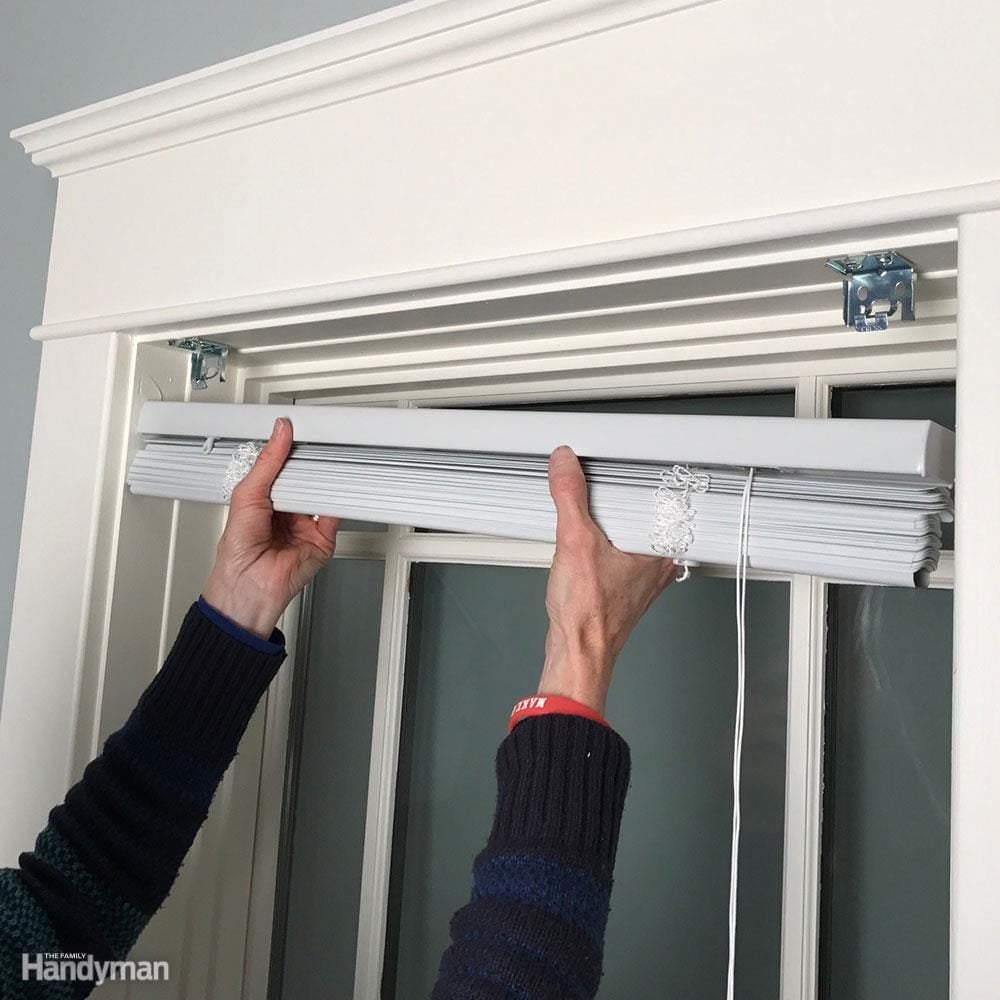


Family room too sunny? Would you like more privacy? Here's how to install window blinds on your own in just a few minutes.
![]()
Time
![]()
Complexity
![]()
Cost
Family room too sunny? Would you like more privacy? Here's how to install window blinds on your own in just a few minutes.
Before purchasing blinds, decide if you want to hang them on the inside or outside of the window.
Interior mounted blinds look tidy and are typically used with curtains. Go with outside mounted blinds if the window frame is too shallow to accommodate the mounting brackets, or if the room lacks curtains and needs total light control. Keep in mind mounting bracket holes will show if you remove the brackets later.
Once you’ve decided where the blinds will go, measure your windows to ensure a perfect fit.
For blinds mounted inside the windows, measure the window’s width, height and depth in three locations. Write down the narrowest width measurement, the longest length and the average depth.
For outside mounting blinds, measure the width and height of the window plus the window trim in three locations. From those measurements, add about three inches to the width and height to ensure the blinds properly block light. When in doubt about the length, remember you can always shorten blinds.
Outside mounts need to be placed on about two inches of flat surface. That might mean mounting the blinds above the frame. In that case, you may need projection brackets to create space between the frame molding and the blinds.
Be sure to purchase the correct-sized blinds for your window and type. There are several kinds to choose from. Most mini blinds are made of vinyl or aluminum. Wood and faux wood blinds are available at a higher cost.
Some blinds come with a cord for lowering and raising the slats. Others are cordless; you raise or lower the slats by moving the bottom rail up or down. Cords can be a hazard to young children, so if you have kids, choose the safer cordless option.